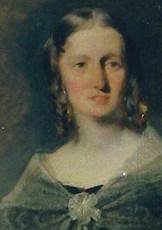Publishing
Lloyd’s first 25 years in business were marked by hectic productivity. Before his success with newspapers, he published many serials.
Early Publications c.1830-1855
Little is known of what he produced in his teenage years, but his focus would have sharpened in 1834 when he had a new family to support.
He turned to periodicals in earnest from that year. Most contained fiction, and some covered practical topics like housekeeping and gardening too. He was well aware of the potential interest among women readers.
His methods were open-minded and flexible. He would try a new title or topic and continue with it as long as there was a demand. If none, it was dropped. Serialised fiction ran for as long as the public showed an interest in the story. Some ceased after half a dozen episodes while others ran and ran: 92 for Sweeney Todd and 109 for Varney the Vampire.
Romances and Penny Serials
Lloyd started publishing stories in parts in 1835 with series featuring well-known pirates and highwaymen. These were followed in 1836 by reworked versions of Dickens and soon after by serialisations of original material. He called them romances, but the early focus on bloodthirsty goings-on stuck and they came to be known as “penny bloods”.
Lloyd became the undisputed market leader. His romances were so prolific and successful that the new genre was known as the “Salisbury Square School of Fiction”, named after the address south of Fleet Street to which he moved in 1843.
The length of stories depended on their success week by week, ranging from 6 to 206 instalments. The best remembered is The String of Pearls (Sweeney Todd, 1846-47). He also brought vampires, already popular among the literati, to a mass market readership (Varney, 1845-47). These two and several others were re-issued later. Weekly numbers were also made available as a compendium at a higher price and some were made into bound volumes.
Charles Dickens
Lloyd‘s publications such as The Penny Pickwick and Oliver Twiss have brought controversy and accusations of plagarism but copyright exists in the expression of ideas, not in the ideas themselves. Plot and characters can therefore be copied as long as the work is totally rewritten. Although Oliver Twiss follows the general arc of Dickens' story, characters and incidents along the way are unique and closer to the real experiences of the cost-conscious reader.

